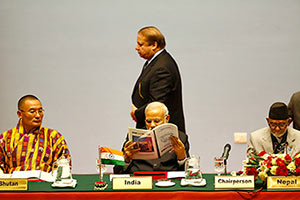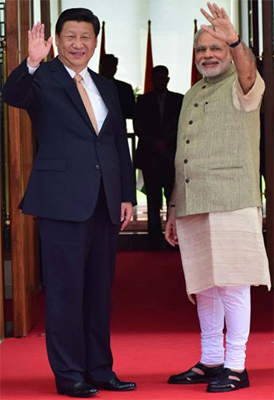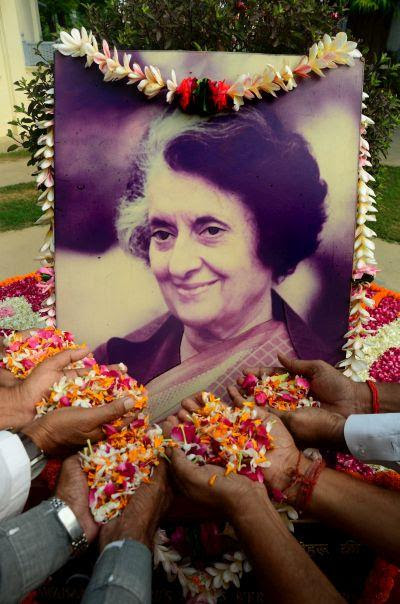Updated: December 16, 2014 01:11 IST
New wars on the Cold War relic
Revisiting the Indian Ocean zone of peace concept, which has led to long debates since 1971, may prove hazardous in the present context, because the rivalry that is taking shape in the region is between the U.S. and its allies, and China.
The National Security Adviser, Ajit Doval, has sought to revisit the U.N. General Assembly (UNGA) Resolution 2832 (XXVI) declaring the Indian Ocean as a zone of peace,
and which has called upon the great powers not to allow an escalation
and an expansion of military presence in the Indian Ocean. (The Hindu, December 1, 2014). The expectation is that it can be used as a device to prevent China from holding sway in the Indian Ocean.
While the Indian Ocean Zone of Peace (IOZOP), in its original form,
appears relevant in the present context, the innumerable problems India
has faced on account of the resolution and the U.N. Adhoc Committee on
the Indian Ocean must be recalled before we take any formal initiative
in this regard. Sri Lanka, our comrade in arms in the IOZOP initiative,
has played games with us even in the happier days of India-Sri Lanka
relations and when China was not in the picture. The new narrative in
the Indo-Pacific may not be congenial to depending on Sri Lanka or any
other neighbour to deliver on the IOZOP in accordance with our
interests.
The formulation
The idea of IOZOP goes back to the days of the 1964 Cairo Conference of the Non-Aligned Movement, which had expressed concern over the efforts of the imperialists to establish bases in the Indian Ocean and declared that the Indian Ocean should not be a battleground for the big powers. The Lusaka Declaration (1970) refined the idea further and it led to the UNGA resolution, which proposed the IOZOP strictly in the context of the raging Cold War at that time.
The idea of IOZOP goes back to the days of the 1964 Cairo Conference of the Non-Aligned Movement, which had expressed concern over the efforts of the imperialists to establish bases in the Indian Ocean and declared that the Indian Ocean should not be a battleground for the big powers. The Lusaka Declaration (1970) refined the idea further and it led to the UNGA resolution, which proposed the IOZOP strictly in the context of the raging Cold War at that time.
The UNGA resolution said: “the Indian Ocean, within limits to be
determined, together with the air space above and the ocean floor
adjacent thereto, is hereby designated for all times as a zone of
peace”. It went on to define the zone of peace not as one where there
was an absence of war or of a state of peace and tranquillity, but
specifically about the great powers halting and eliminating all bases,
military installations and logistical facilities, and the disposition of
nuclear weapons and weapons of mass destruction. It also envisaged
universal collective security in the region without military alliances.
Ships would have the right to unimpeded use of the zone, except warships
posing a threat to the littoral and hinterland states of the region.
In subsequent years, in the Adhoc Committee on the Indian Ocean, which
was set up under the aegis of the U.N. disarmament machinery, the
concept divided rather than united permanent members and the littoral
and hinterland states. The permanent members, except China, did not
support the original resolution. France, the United States and the
United Kingdom kept out of the committee as they felt that they had been
directly targeted and the Soviet Union had participated in the work of
the committee, paying lip service to the notion of a zone of peace.
Australia was the spokesperson of the West, which raised questions on
the feasibility of the elimination of foreign military presence.
Regional interpretations
Till the end of the Cold War, India stuck to the purist interpretation of the zone as an area free of foreign military presence, particularly bases and other facilities, conceived in the context of great power rivalry. Implicitly, India did not object to the movement of warships, as long as they did not threaten the regional states. Indira Gandhi reiterated this position at a press conference in Moscow, making the Soviet presence legitimate, even though there were reports that the Soviet Union was seeking to establish bases in Somalia and elsewhere.
Till the end of the Cold War, India stuck to the purist interpretation of the zone as an area free of foreign military presence, particularly bases and other facilities, conceived in the context of great power rivalry. Implicitly, India did not object to the movement of warships, as long as they did not threaten the regional states. Indira Gandhi reiterated this position at a press conference in Moscow, making the Soviet presence legitimate, even though there were reports that the Soviet Union was seeking to establish bases in Somalia and elsewhere.
“The innumerable problems India has faced on account of the U.N.
resolution and the U.N. Adhoc Committee on the Indian Ocean must be
recalled before we take any formal initiative in
this regard.”
After a meeting of the littoral and hinterland states in 1979, India
became acutely aware of a hidden agenda on the part of Sri Lanka and
others to draw attention to the increasing strength of India, posing a
threat to the smaller states in the region. Sri Lanka was not loath to
have an American presence in the Indian Ocean as a stabilising factor.
President Jayewardene said at one point that he did not know whether Sri
Lanka wanted the Americans to get out of the Indian Ocean and even
hinted that the interests of regional countries differed.
Pakistan began to emphasise “denuclearization” of the Indian Ocean after
the Indian tests of 1974 and took the initiative of a Nuclear Weapon
Free Zone in South Asia, which was strongly opposed by India. The
polarisation was palpable in the Adhoc Committee. Consequently, the
possibility of a Colombo Conference to implement the Declaration became
remote. India did not find it helpful to hold the Colombo conference
without the participation of the great powers. Nor did India participate
fully in the Indian Ocean Marine Affairs Cooperation (IOMAC) on the
plea that it detracted from the concept of the zone of peace by inviting
the great powers to it.
A fallout of the debate in the Indian Ocean Committee was that India and
Australia had become antagonistic to each other. Australia began
complaining about the growth of the Indian Navy and also countered India
at disarmament forums, particularly at the Comprehensive Test Ban
Treaty (CTBT) negotiations. At one point, K. Subrahmanyam maintained
that the confrontation in the Indian Ocean should be treated as being
triangular rather than bipolar as he felt that the military presence of
the super powers was directed against the autonomy of the Non-Aligned
countries.
China had taken a position of tactical support to the zone, as its
presence in the Indian Ocean was not in focus. As a proclaimed supporter
of the developing countries, China expressed solidarity for the
littoral and hinterland states in seeking to eliminate foreign military
presence. The focus on the Indian capabilities, which emerged in this
context, was also a welcome development for China. It claimed legitimacy
for itself as a permanent member of the Security Council and as an
Asian power.
Shift in focus
After the end of the Cold War, the dynamics in the Committee underwent a sea change, with India itself shifting the focus of the zone of peace from the elimination of foreign military presence to one of cooperation between the major powers and the littoral and hinterland states. The debate became increasingly an embarrassed ritualisation of the demilitarisation effort. India’s joint exercises in the Ocean with multiple partners legitimised the presence of various navies including that of the U.S.
After the end of the Cold War, the dynamics in the Committee underwent a sea change, with India itself shifting the focus of the zone of peace from the elimination of foreign military presence to one of cooperation between the major powers and the littoral and hinterland states. The debate became increasingly an embarrassed ritualisation of the demilitarisation effort. India’s joint exercises in the Ocean with multiple partners legitimised the presence of various navies including that of the U.S.
The Adhoc Committee soldiered on without a particular focus, merely
recalling the old resolution and emphasising the need for the permanent
members and major maritime users to join in an effort to bring about a
balance in the Indian Ocean. From an arena of the Cold War, the
Committee became ritualistic without a clear focus or agenda. Naturally,
new threats, such as piracy, terrorism, drug trafficking, etc were
brought in, making it a forum to combat non-state actors rather than the
great powers.
Revisiting the zone of peace concept, which has led to the long debates
since 1971 may prove hazardous in the present context, because the
rivalry that is taking shape in the region is between the U.S. and its
allies, and China. With the kind of support China demonstrated in
Kathmandu among the South Asian Association for Regional Cooperation
(SAARC) countries, it is possible that the zone of peace idea will turn
into a move to counter the U.S. as a foreign presence and to seek some
balance between India and China in the Indian Ocean. China might well
gain a status similar to India and strengthen its capabilities there.
International focus on India’s naval acquisitions, present and future,
may well become counterproductive. According to Admiral Arun Prakash,
there are not many navies, worldwide, which have seen, in recent years,
or are likely to see such significant accretions to their
order-of-battle. “This force build-up, once complete, will not only
enhance the Navy’s combat capability by an order of magnitude, but would
also alter the balance of power in the Indo-Pacific region.”
A way out
The greatest resistance to the revival of the IOZOP will come from those who will argue that the idea itself is outdated as the Cold War and great power rivalry are non-existent. They are likely to remind us that we ourselves had stressed the Cold War angle more than anything else. Others will begin highlighting the spirit of cooperation that has dawned in the Indian Ocean and lamenting that India is reviving old ghosts. The U.S. may also look at the concept negatively as it will impinge on its own activities. China will marshal support to campaign against the concept of the zone, from which they are sought to be excluded. In other words, a new IOZOP will have even less chance of success than the old one.
The greatest resistance to the revival of the IOZOP will come from those who will argue that the idea itself is outdated as the Cold War and great power rivalry are non-existent. They are likely to remind us that we ourselves had stressed the Cold War angle more than anything else. Others will begin highlighting the spirit of cooperation that has dawned in the Indian Ocean and lamenting that India is reviving old ghosts. The U.S. may also look at the concept negatively as it will impinge on its own activities. China will marshal support to campaign against the concept of the zone, from which they are sought to be excluded. In other words, a new IOZOP will have even less chance of success than the old one.
A strategy of enhancing cooperation between the littoral and hinterland
states and external powers without the reference to the IOZOP may have a
greater chance of success. India has special strengths in combating
piracy, alleviating natural disasters and trafficking. The involvement
of the U.S. in fighting terrorism may be of an advantage. China has
already taken note of India’s inclinations in the Asia-Pacific and
offered cooperation to avoid the “Asia Pivot” and to adopt an
alternative Chinese vision. An opportunity exists for us to develop a
third plan of engagement between the regional countries and external
forces for fruitful cooperation in the Indo-Pacific.
(T.P. Sreenivasan was India’s representative to the U.N. Adhoc
Committee on the Indian Ocean from 1980 to 1983 and from 1992 to 1995)


 It
is unconscionable to choose between Sardar Patel, who united India
physically, and Indira Gandhi, who gave meaning, content and pride to
the unity of the nation and became a martyr at the altar of national
unity, says Ambassador T P Sreenivasan.
It
is unconscionable to choose between Sardar Patel, who united India
physically, and Indira Gandhi, who gave meaning, content and pride to
the unity of the nation and became a martyr at the altar of national
unity, says Ambassador T P Sreenivasan.